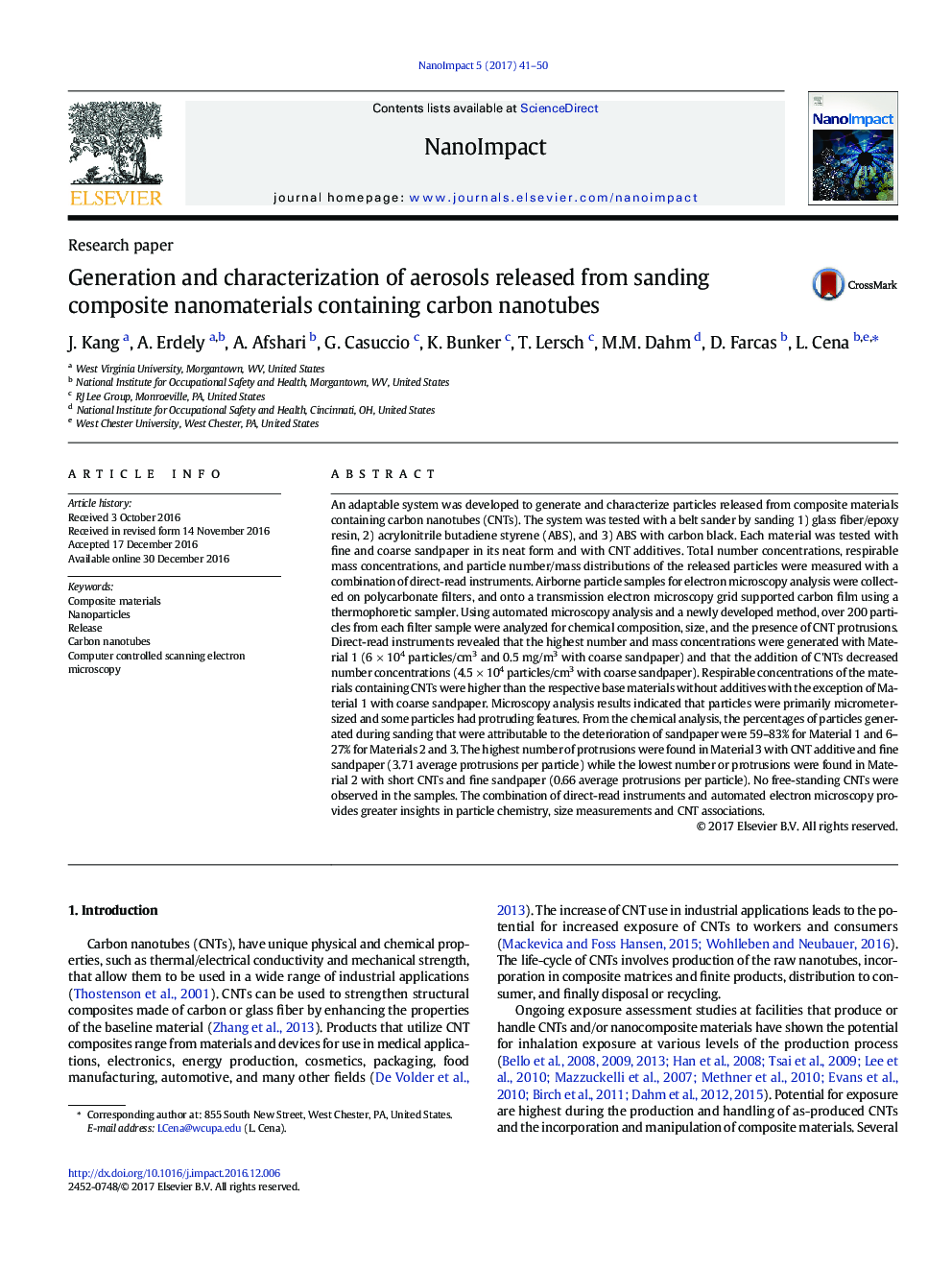| کد مقاله | کد نشریه | سال انتشار | مقاله انگلیسی | نسخه تمام متن |
|---|---|---|---|---|
| 5560712 | 1562022 | 2017 | 10 صفحه PDF | دانلود رایگان |
- Generated/characterized particles released from composite materials with CNTs
- Developed method for automated microscopy analysis
- CNT protrusions identified, counted and measured on over 200 particles per sample
- No free-standing CNTs identified
- Combining direct-read instruments and microscopy is invaluable for characterization.
An adaptable system was developed to generate and characterize particles released from composite materials containing carbon nanotubes (CNTs). The system was tested with a belt sander by sanding 1) glass fiber/epoxy resin, 2) acrylonitrile butadiene styrene (ABS), and 3) ABS with carbon black. Each material was tested with fine and coarse sandpaper in its neat form and with CNT additives. Total number concentrations, respirable mass concentrations, and particle number/mass distributions of the released particles were measured with a combination of direct-read instruments. Airborne particle samples for electron microscopy analysis were collected on polycarbonate filters, and onto a transmission electron microscopy grid supported carbon film using a thermophoretic sampler. Using automated microscopy analysis and a newly developed method, over 200 particles from each filter sample were analyzed for chemical composition, size, and the presence of CNT protrusions. Direct-read instruments revealed that the highest number and mass concentrations were generated with Material 1 (6Â ÃÂ 104Â particles/cm3 and 0.5Â mg/m3 with coarse sandpaper) and that the addition of C'NTs decreased number concentrations (4.5Â ÃÂ 104Â particles/cm3 with coarse sandpaper). Respirable concentrations of the materials containing CNTs were higher than the respective base materials without additives with the exception of Material 1 with coarse sandpaper. Microscopy analysis results indicated that particles were primarily micrometer-sized and some particles had protruding features. From the chemical analysis, the percentages of particles generated during sanding that were attributable to the deterioration of sandpaper were 59-83% for Material 1 and 6-27% for Materials 2 and 3. The highest number of protrusions were found in Material 3 with CNT additive and fine sandpaper (3.71 average protrusions per particle) while the lowest number or protrusions were found in Material 2 with short CNTs and fine sandpaper (0.66 average protrusions per particle). No free-standing CNTs were observed in the samples. The combination of direct-read instruments and automated electron microscopy provides greater insights in particle chemistry, size measurements and CNT associations.
125
Journal: NanoImpact - Volume 5, January 2017, Pages 41-50
